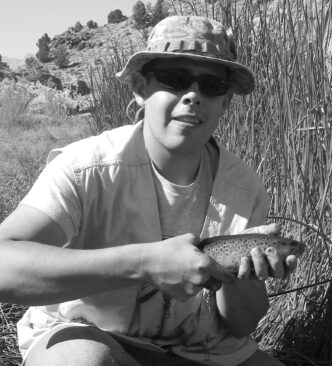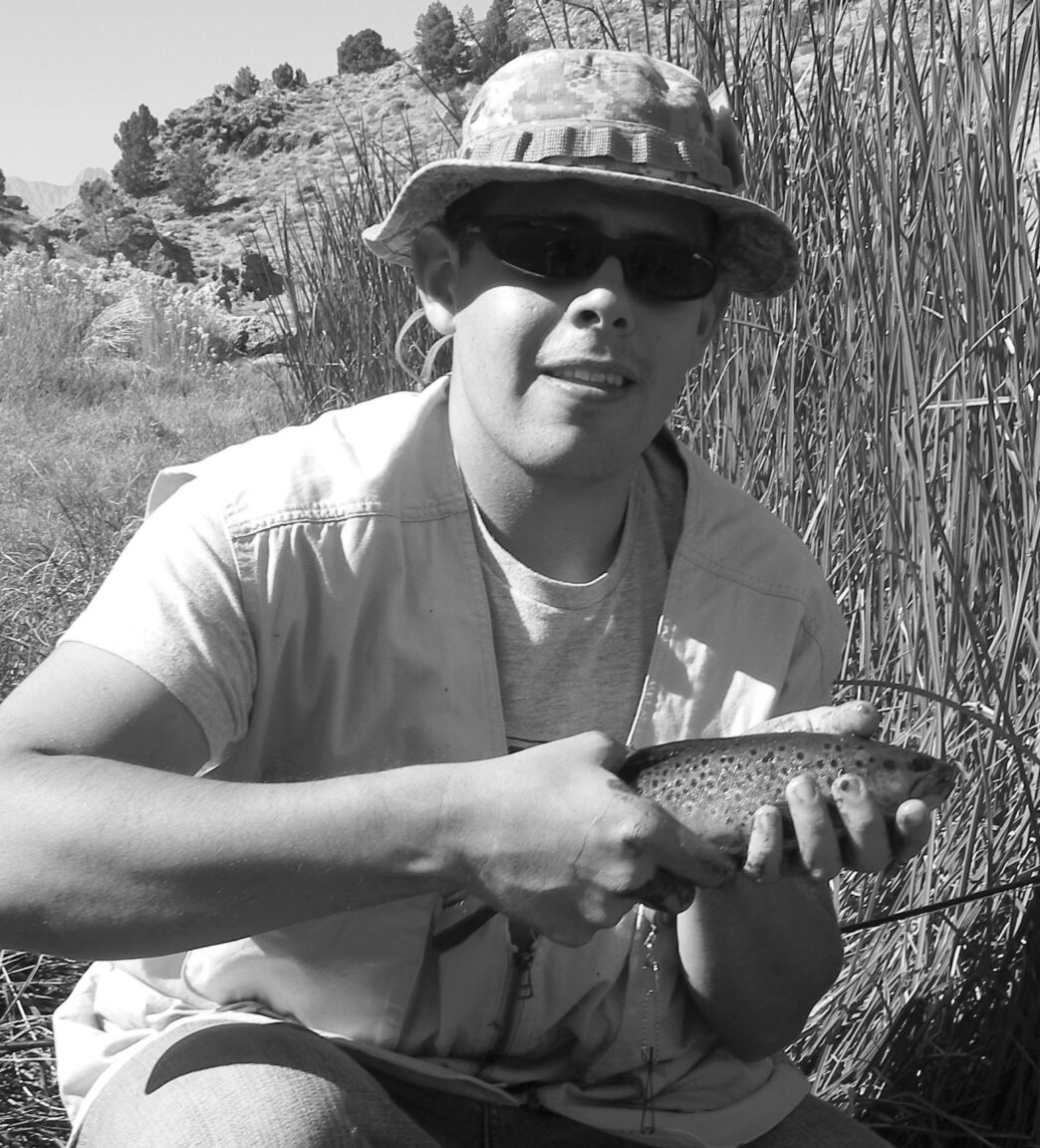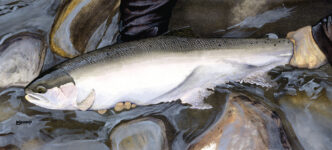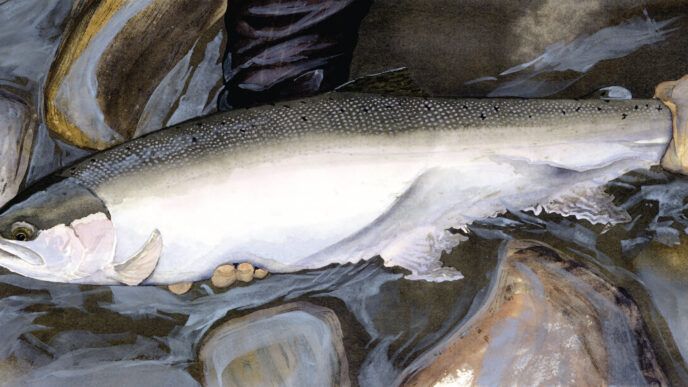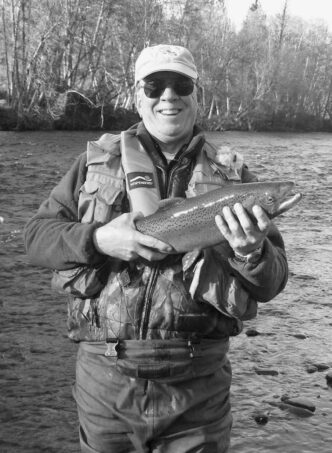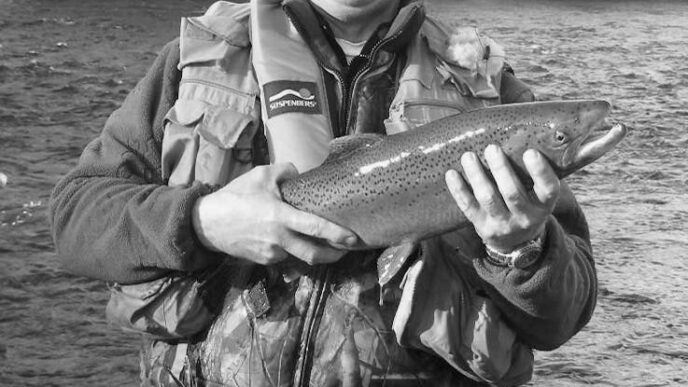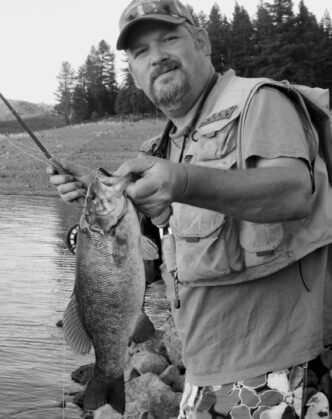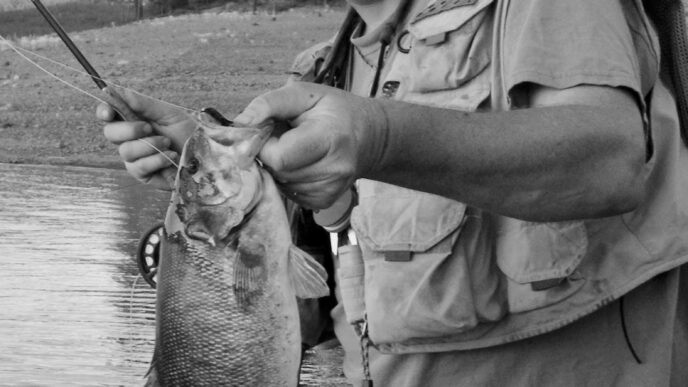As the group of combat veterans arrived at our clubhouse for a fly-fishing class, the first impression we had was how young they looked. We didn’t expect this — to see such youthful people who had been emotionally injured by their combat experiences in Iraq or Afghanistan. These combat vets — seven men and one woman — were finding it a challenge adapting to civilian life while dealing with the effects of posttraumatic stress disorder, the hidden wound of war. They were meeting us this Saturday in September 2008 to take an introductory class in fly fishing, which was to be followed the next weekend with a two-day fishing trip to the eastern Sierra.
Several months earlier, the Pasadena Casting Club’s Board of Directors approved a proposal to start a program to provide fly-fishing education and onstream experience for wounded combat veterans. With enthusiastically unanimous approval, the board provided a small budget for the Wounded Vets Program. The goal of the program was to provide our participants with a potentially life-changing experience by exposing them to an activity that is not only fun, relaxing, and rejuvenating, but that would also convey a sense of aesthetics and love of the outdoors that few other sports possess. We wanted this experience to contribute to the healing process of these wounded warriors through the sport we love.
The primary purpose of our program was to provide something of value to those who had sacrificed in the service of their country. But as it turned out, those of us who played a role in the implementation of the program experienced a sense of gratification beyond our expectations. This article, therefore, is presented with two goals in mind: to provide a model that readers might replicate or modify to start such a program in their own angling clubs and to tell the story of how giving time and one’s self in such a program can produce both a great sense of purpose and warmheartedness for the providers and, we hope, some healing for the vets, as well.
One of the initial challenges in organizing our program was finding a source of participants — an organization that would appreciate both the benefits and requirements of our proposal. A concern about liability led to the requirement that the organization provide staff assistance during both the classroom and the on-stream experience. We also sought out an organization that would provide transportation for the group of vets and staff. There are several organizations, both governmental and nongovernmental, that provide services for military veterans. After a few unsuccessful efforts, we contacted the Sepulveda Vet Center in the San Fernando Valley, about 20 miles from Pasadena. A meeting with the outreach coordinator there led to the declaration “We’re in,” securing a handshake agreement to provide eight combat veterans, two staff members, and transportation for all the program elements.
The Vet Center program is part of the Department of Veterans Affairs and operates a system of 232 community-based counseling centers located in all 50 states and U.S. territories. The Vet Centers provide readjustment counseling and outreach services for veterans who have served in combat zones. They are staffed by a multidisciplinary team of dedicated providers, many of whom are combat veterans themselves.
To allow an on-stream experience without cost to the participants, a local fly shop provided gear for the vets. We planned the excursion for Mammoth Lakes, and several condo owners donated their properties for a two-night stay, while a local guide donated two days of his services on the water. The Pasadena Casting Club has conducted an annual fly-fishing and casting course for over 35 years, which we used as a model for the course given to the vets in preparation for their on-stream experience. The course included classroom instruction providing a broad introduction to fly fishing, as well as poolside, hands-on casting instruction covering the basics of casting and line management. We provided a casting instructor for every two vets, and the instructor would continue to work with these same vets as a fishing partner during the on-stream experience.
On a Saturday, the group of eight vets and two Vet Center staff members arrived at the Pasadena Casting Club’s clubhouse, brimming with eagerness to learn this new sport. After pastries and coffee, the classroom instruction, interspersed with poolside casting practice, flowed through the day, and all the participants gained skill in the elements of fly fishing.
Thus prepared, the group of vets and fishing partners journeyed north on the following weekend to Mammoth Lakes for a two-day opportunity to apply the skills and knowledge learned in the course. On the first day, our guide took us to Hot Creek, a world-class fishery about a 15minute drive from Mammoth Lakes. As the group of 15 anglers descended the canyon wall to the stream, we were greeted with trout actively feeding at the surface. Excitement reigned. After a few wet stumbles, many lost flies, and even more line and equipment entanglements, the participant vets began to find their way around this new thing called fly fishing. Everyone in the group had hook-ups, and most caught at least a fish or two. One young vet landed a beautiful 17-inch brown trout.
Feedback from the Vet Center staff that evening indicated that while the vets were very appreciative of our help during the day, they were looking forward to becoming more independent on the stream. Thus, the fishing partners indicated that on the second day, we would be available to assist at any time but, otherwise, would be fishing alongside them.
On Sunday, our guide took the group to the upper Owens River, a mile or so above Lake Crowley. Here, with more space to spread out and building on the experience of the previous day, the vets began to show more comfort with and control of the equipment. They were correcting their own mistakes and taking charge of landing their own fish — accepting success or failure. By midday, all had caught, landed, and released their own trout. During lunch and at the time of departure, it was clear that the act of catching fish was no more important to the vets than the spirit of the adventure and the personal reward derived from exposure to the art and science of fly fishing — a subject that has captivated and inspired writers and poets for centuries. The undulating curves of the river, with its meadow grasses and a backdrop of spectacular mountain peaks, became as much a topic of conversation as the fish that were just recently landed. The sincere gratitude expressed by each vet to each fishing partner was overwhelming.
That this seemingly small act of taking someone fishing and helping them learn could mean so much began to show each fishing partner an even deeper meaning that can be drawn from fly fishing. We, too, were the recipients of something special, creating a memory that will not be forgotten.
Editor’s note: Will Trefry is director of the Pasadena Casting Club’s Fly Fishing Education Program. Jim Graves is director of the Pasadena Casting Club’s Wounded Vets Program and is also a licensed psychologist in California. For more information on the Pasadena club’s veterans program, contact Jim at jgraves@charter.net.



